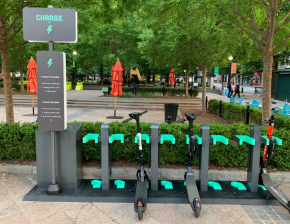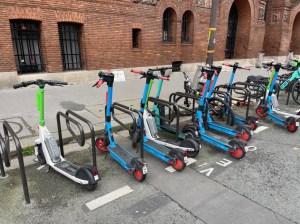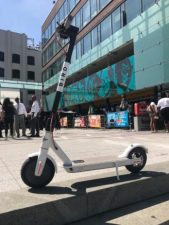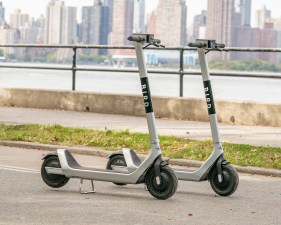Op-Ed: How Cities Should Regulate Scooters
Some principles for avoiding a 'Wild West' environment from the chief U.S. lobbyist of Lime.
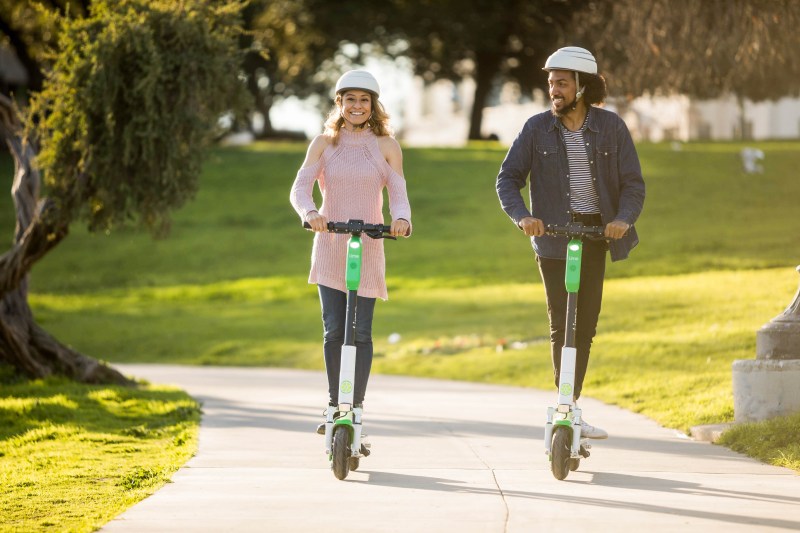
Electric scooters hold great promise for transforming how commuters and visitors navigate traffic-clogged cities, providing a cleaner and faster option than rideshare, and a “first and last mile” solution for getting between transit, home, or work. They’re also just plain fun.
Yet, when scooters are introduced into a city, there are also complaints — chiefly around safety and clutter. Cities are grappling with how to properly regulate scooters, make them a reliable part of a city’s transportation network, and protect riders and non-riders alike.
As the head of North and South America government relations for scooter-operator Lime, I’ve seen cities take a range of approaches to these challenges. Here’s my advice for cities looking to capture the benefits of this new technology without inviting chaos on city streets.

Start with a reasonable number, and grow based on demand. Cities should allow a starting fleet of about one scooter per 100 residents, and establish a “dynamic cap” that increases monthly if they can demonstrate that each scooter gets an average of three or more rides per day. Norfolk, Salt Lake City and Miami use this approach to match scooter fleets to rider demand.
Create incentives for operators to advance city priorities. Some cities are saddling scooter companies with onerous compliance requirements — including putting virtual fences around the busiest areas or unsafely mandating that scooters slow or stop while riders are on them. A better approach is that of Portland, which incentivizes operators with fleet increases for conducting safety-training workshops, raising ridership in low-income areas, or reducing car trips.
Avoid a ‘Wild West’ environment. Cities that have allowed large numbers of scooters from many companies — like Austin, San Antonio, Nashville and San Diego — have found themselves overrun. Instead, cities should choose a limited number of operators (anywhere from two to four) by either curtailing the number of permits or issuing a request for proposals to select vendors. San Antonio and Nashville are moving in this direction.
Subject scooters to the same rules as bikes. Scooters should be able to ride anywhere and any time that a bike can ride; subjecting scooters to stricter rules amounts to regulatory discrimination and can cause confusion among riders, non-riders, and law enforcement. Cities should set the same speed limits or no-riding rules — and then enforce its rules on riders, not operators, to change their behavior.
Make sure scooters are reliable. Earlier this year, scooter ridership surpassed traditional bike share because of proximity and convenience. In contrast to a docked bike, a “free-floating” scooter mere steps away raises the odds that someone will choose it instead of a car.
That said, cities rightfully worry about scooter-parking “clutter.” Lime educates our riders on proper parking etiquette, but some cities want to mandate parking in designated corrals. Lime’s rider-analysis data shows, however, that with each added step that a user has to walk to find a scooter, the less likely riders will choose a scooter as an alternative to a taxi.
Instead, a better approach is to have scooters parked no more than 60 steps (150 feet) from any building, available through either free-floating parking in less dense areas or abundant parking spaces in dense downtowns. San Diego has effectively balanced rider convenience with tidiness in this way.
Use fees to make safer infrastructure. Lime tries to ensure the safest scoot possible — from world-class hardware to extensive rider education. But almost all scooter-related fatalities in the United States are caused by cars hitting scooter riders. The safest way to scoot is in protected bike lanes, separated from both pedestrians and cars. Cities can help pay for the lanes by charging scooter riders a modest, but equitable, fee on every trip. Going the wrong way, Portland taxes scooters $0.22 per mile to support infrastructure, but only charges private cars the equivalent of $0.02 per mile through gas taxes. Scooter riders shouldn’t pay vastly more for using for a greener vehicle that takes up less space and inflicts less road damage than a car.
Align incentives to make scooters a real option in low-income areas. Some cities require operators to deploy a minimum number of scooters in low-income “equity” zones, often resulting in bare-minimum compliance. Cities should preserve equity-zone deployment requirements, but eliminate fees and fleet caps for those areas — and to award increases in non-equity-zone fleets if an operator reaches a targeted number of equity-zone trips. That would better align operator incentives with cities’ goals of providing fair transportation options.
Use data wisely in guiding city planning. Scooter-trip data can be valuable for planning, but should exclude personally identifiable or real-time data that could impinge on riders’ privacy. Cities should gather only the data they need for transportation planning and measuring operator performance, and should follow best practices for safeguarding that data. Cities should use the Mobility Data Standard Provider API, which has been embraced by more than 70 cities globally, and leverage third-party services such as Ride Report or Populus to help make sense of the data.
Scooters hold great promise for transforming how people get around — providing greener commuting alternatives, aiding tourism, and reducing our reliance on cars for short trips. But we will never realize this transformation unless cities regulate shared scooters with an eye toward unleashing their full potential.
Adam Kovacevich is head of government relations (Americas) for Lime, a shared e-scooter operator. The opinions of Kovacevich, of course, do not necessarily reflect those of Streetsblog.
